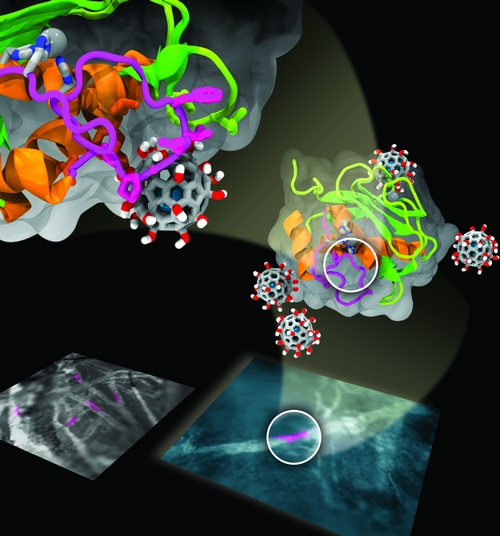Potentially more effective nanomedicine for pancreatic cancer discovered
Pancreatic cancer is the most lethal of the solid tumors and the fourth-leading cause of cancer-related death in North America. In the latest
 |
| the experiments show thatpharmacokinetic action of nanoparticles could be markedly different from the traditional target-based molecular drugs |
The discovery was published on vol. 109 no. 38, the Proceedings of the National Academy of Sciences of the United States of America (PNAS) in September before print, following the previous publications on PNAS in 2010 and 2011. Scientists from CAS Key Laboratory for Biomedical Effects of Nanomaterials and Nanosafety, Computational Biology Center, IBM, etc., conducted a series of experiments at animal, tissue, and cellular levels.
They found that endohedral metallofullerenol Gd@C82(OH)22 can successfully inhibit the activity and can also effectively blocks tumor growth in human pancreatic cancer xenografts in a nude mouse model. Apart from providing insights for a brand new design of nanomedicine for fatal diseases such as pancreatic cancer, these findings also imply that the pharmacokinetic action of nanoparticles could be markedly different from the traditional target-based molecular drugs.
Since this new discovery aroused huge international responses, Prof. ZHAO Yuliang, the leading scientist in this research team was elected the associated chief editor of Nanomedince in 2012, which is one of the top American periodicals in nanoscience. In 2011, with Prof. Andre Nel from UCLA, Prof. Zhao was invited to edit a special column named health and safety in nanoenvironmental in Accounts for Chemical Research, the academic periodical of American Society of Chemistry.
CAS Key Laboratory for Biomedical Effects of Nanomaterials and Nanosafety was formally established at the Institute of High Energy Physics in 2003. The lab builds up a platform that combines chemical, physics, biomedical science and nano-science crossing and constructs a high level of experimental techniques and international academic exchange.
The link to the published paper on PNAS 2012:
http://www.pnas.org/content/109/38/15431.full.pdf+html
The link to CAS Key Laboratory for Biomedical Effects of Nanomaterials and Nanosafety: